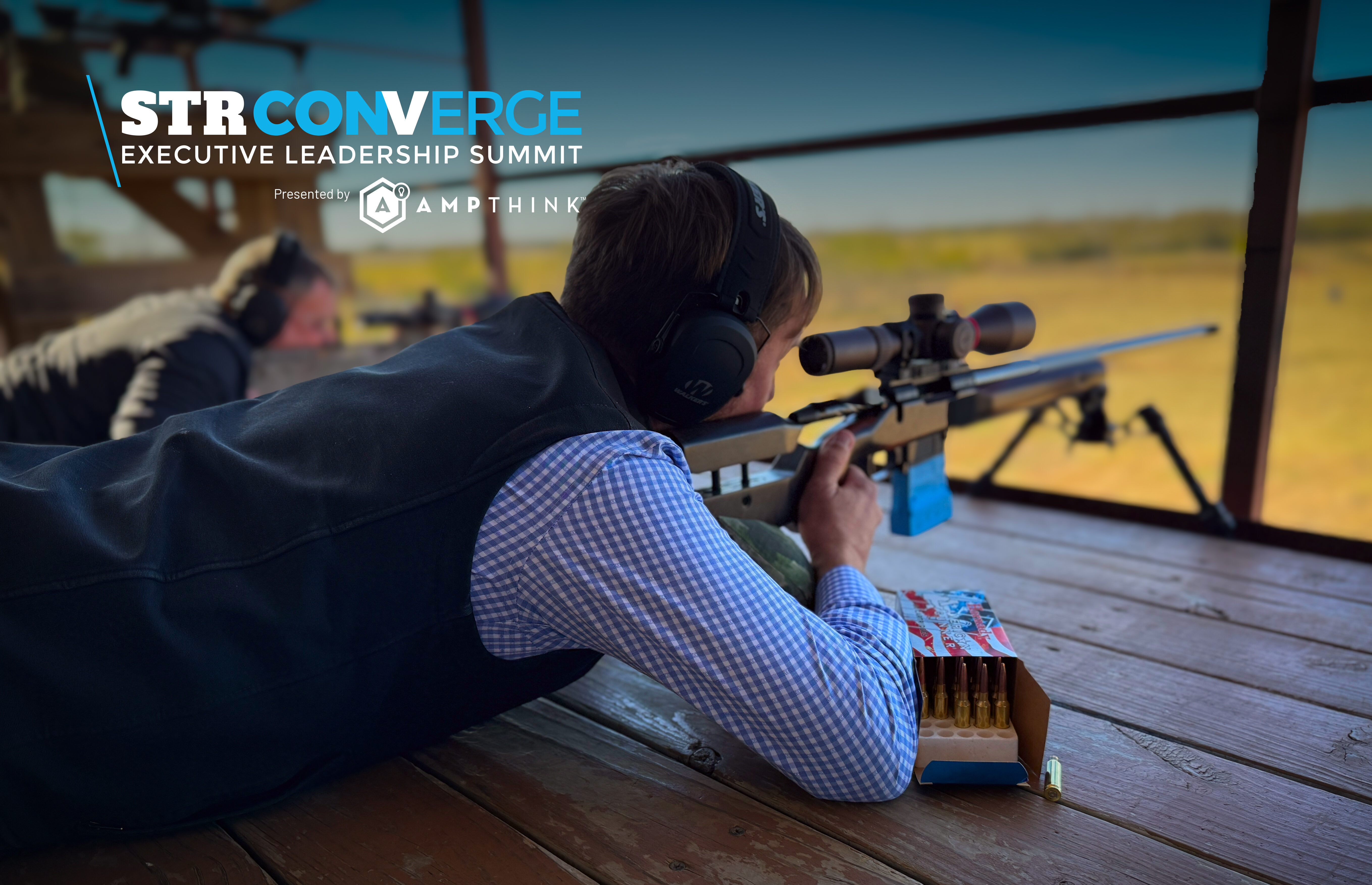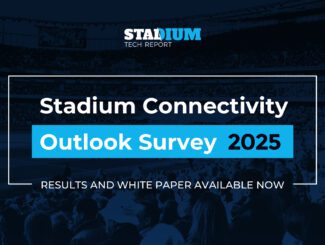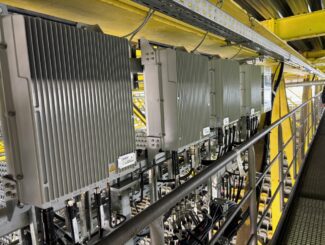
Most people think they know how leadership summits begin. A ballroom. A keynote. Maybe a panel someone pretends to listen to. But the people arriving at STR’s Converge Summit last week in Dallas felt something closer to what experienced catcher, Scott Hatteberg, once felt when the A’s asked him to play first base: as if they had been dropped onto the moon with instructions to act naturally.
In this case, the place was a tactical rifle range on the outskirts of Dallas, where a dozen executives – men and women who ordinarily negotiate sponsorship deals and oversee multimillion-dollar technology budgets – were lying on wood planks suspended 40 feet above the Texas turf, learning how to sight a rifle.
This was Day 1 of the Converge Summit.
Some of them squinted through scopes with the tentative focus of people rethinking their life choices. Others, perhaps embarrassingly eager, settled into the prone position as though they had been waiting their entire professional lives for someone to hand them a precision firearm and say, “Go ahead, give it a shot.”
And yet, as absurd as it looked, something real happened in that moment. Strangers became teammates. Competitors became collaborators. Nobody in the dusty platform was thinking about job titles. By the time the instructors called for the first team drills, the usual industry armor of polished résumés, prepared remarks, and vendor-approved talking points had quietly fallen away.
That was exactly the point.
Our inaugural Converge Summit earlier this year in Napa Valley had shown us that senior leaders wanted a new kind of forum, one built on trust rather than posturing. Dallas was the test of whether that need was real or simply circumstantial.
Because the next morning, those same executives would sit around a table and confront a problem their industry has been avoiding for more than a decade.
The problem hiding in plain sight
The stadium business has a math problem. No one likes to say it out loud, but everyone feels it. Technology spending keeps rising much faster than stadium revenues, and every decision seems to lead to another unavoidable upgrade, another refresh cycle, another round of equipment that must be bought, installed, integrated, and supported.
Most people accept this as the natural order of things. A stadium is expensive. Technology is expensive. Fans want more screens. Broadcasters want more angles. Sponsors want more attention. You pay the bill.
But what if the bill itself is the problem?
This was the question at the heart of the Converge Summit, and the reason we began the session with a story everyone in sports claims to know but few have fully digested: the tale of Moneyball’s central character, Billy Beane.
Not the version from the movie, but the one underneath it. The version about a man whose goal had nothing to do with spending less money. His intended outcome was simple: to win games. And when the rising price of baseball talent made that outcome unreachable through traditional means, he did the one thing every industry hates.
He looked where no one else was looking.
If everyone else was paying a premium for players who “looked” like ballplayers, he asked whether the market had mispriced something that looked less impressive but mattered more. And he found it in a single, deceptively boring statistic: the ability to get on base.
That one overlooked metric became the hinge on which an entire franchise pivoted.
The Stadium Industry’s blind spot
On Day 2 in Dallas, as the executives took their seats around the conference table, a similar realization took shape.
They came ready for the standard strategic tour of the problem: that stadium tech inflation is running hot and cannot continue forever. Everyone expected to describe it, debate it, maybe dress it up with charts. No one expected to uncover a solution hiding in plain sight, or that the true driver of cost in stadium technology has almost nothing to do with technology.
Every new scoreboard, every Wi-Fi refresh, every A/V integration, every broadcast upgrade is, beneath the surface, a construction project. And construction is riddled with inefficiency: misaligned scopes, poor coordination, rushed timelines, rework, duplicative labor, and the quiet tax of doing the same job two or three times until everyone gets it right.
Nobody budgets for inefficiency, but everybody pays for it.
The striking thing was not the existence of this problem. It was that almost no one in the room had previously named it as the problem.
Just as the baseball world confused the price of players with the value of players, the stadium world has spent years confusing the price of technology with the value of technology. And just as Beane discovered that on-base percentage predicted wins better than batting average, the executives in Dallas began to see that construction efficiency predicts cost control better than anything else they manage.
It was their version of On Base Plus Slugging ( OPS). Mundane, unglamorous, quietly powerful.
The Second blind spot
But even that was not the full story.
Technology in stadiums does not justify itself by being cheaper, or newer, or more impressive. It justifies itself by being used; by sales teams adjusting screens without calling IT, by suite holders controlling A/V systems conveniently from their mobile phones, by TV trucks plugging into broadcast networks without requiring a small army of engineers at their side.
Usability is where technology stops being a cost center and starts being a competitive advantage. When leaders in the room began talking about this, there was a noticeable shift. Heads nodded. Pens paused over notebooks. Everyone knew this was the part of the conversation no one normally has. Indeed, there is a way to measure stadium tech ROI.
Why Converge worked
By the end of the day, the executives were speaking to one another with an unusual level of candor. That was not an accident. You cannot get people to reveal what they actually think, or admit what they do not know, unless you first ask them to lie in the dust with a rifle and trust someone they only met 20 minutes earlier.
Converge was built on that idea: that breaking the usual patterns creates room for new truths to emerge.
Napa showed us there was real appetite for this.
Dallas confirmed that the appetite is growing.
The parallel that lingered
As the summit closed, we returned to the story that opened it. Billy Beane was forced to spend less and he was still expected to win. Finding the right players was the result of looking in the right place.
Stadium leaders are not trying to buy cheaper technology. They are trying to generate more revenue, deliver better experiences, and operate at a higher level than the season before. Controlling costs can happen when the industry starts looking in the right place.
That is the Moneyball lesson.
That is the Converge lesson.
And with planning already underway for our 2026 Converge Summit series, the only remaining question is the same one we asked in Dallas:
Who will be in the room for the next chapter?






